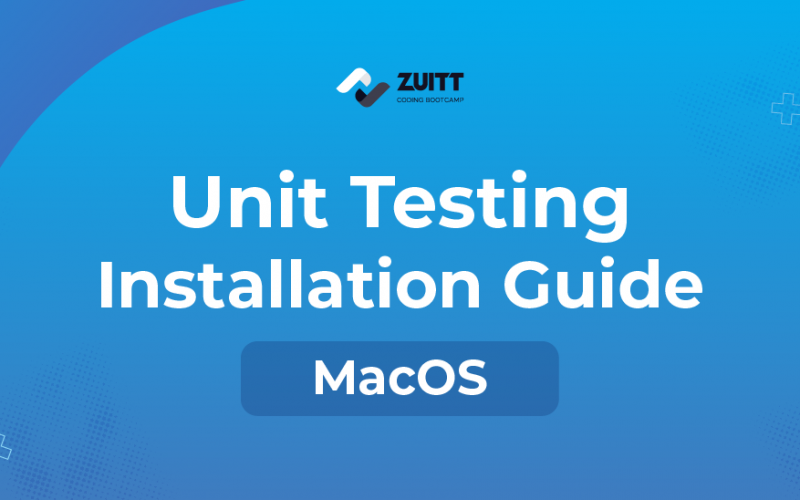Note:
- If the version number installed in your device is lower than the version provided in the screenshots, follow the steps below to install the updated version of the applications.
- If an updated version of the above provided applications are already installed in your device, the following instructions will still work with minor differences in the version of the app you’re shown in the output which should have no impact during the course of the bootcamp.
Allow Apps from the App Store and Identified Developers
Reference: https://support.apple.com/en-us/HT202491
To allow installation from the App Store and Identified Developers on your Mac, choose Apple Menu > System Preferences, click Security & Privacy, then click General.
Click the lock and enter your password to make changes. Select App Store and identified developers under the header “Allow apps downloaded from.”
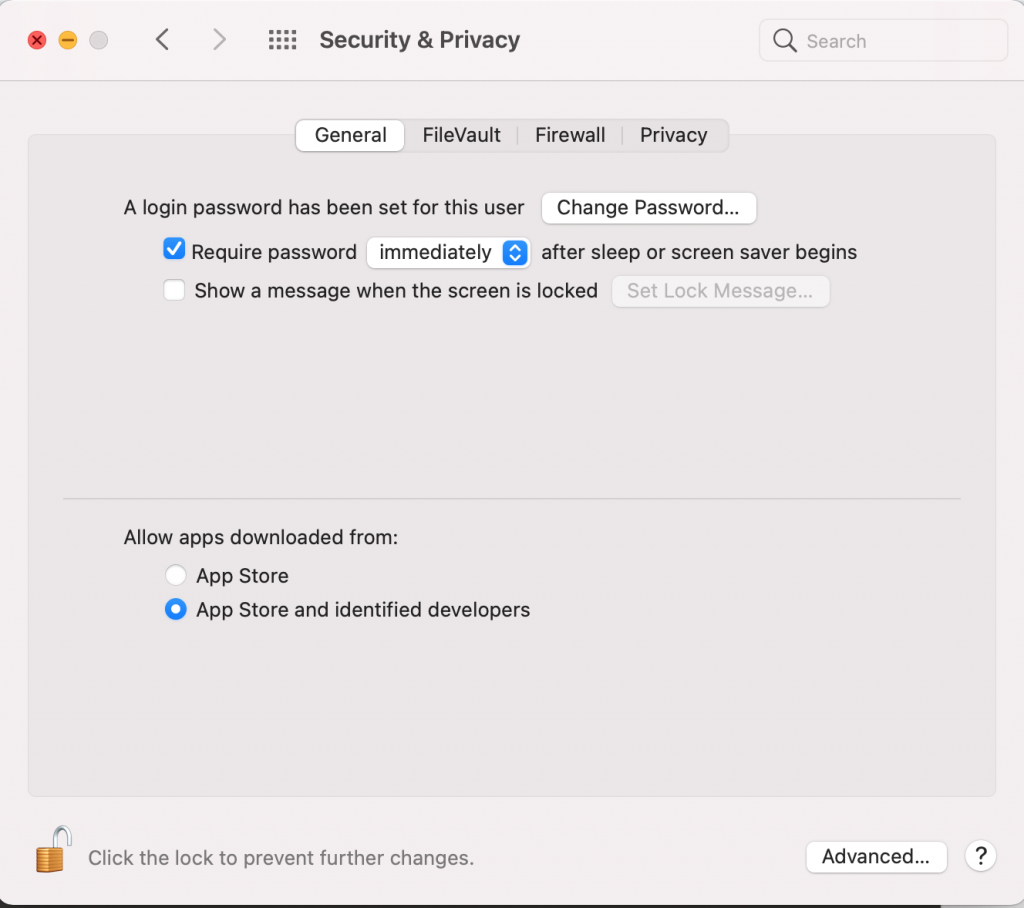
Homebrew
Click the Spotlight Search located at the top-right of your screen (the magnifying glass icon at the right side of the current time) then search and open a program named Terminal.
Inside the Terminal program, copy-paste the code below then press Enter.
| /bin/bash -c “$(curl -fsSL https://raw.githubusercontent.com/Homebrew/install/master/install.sh)” |
The terminal should now look like this:

Press Enter and type your password to continue then wait for the install process to finish.
The executed command will install utility tools (specifically for MacOS devices) that will be used in the bootcamp.


Sample screenshots of the outputs in the Terminal while the command is running.

To verify that the installation process is successful, type the following in the Terminal:
| brew -v |
It should output the following:

Git was also installed along the way. To confirm, type git –version and the output should be like this:

If the version number is higher than in the screenshot, it means that it is more updated.
After verifying the success of the install process, keep the Terminal in the dock by right-clicking the program in the dock and choosing the Keep in Dock option.

Google Chrome
Open a web browser (initially Safari) and go to https://google.com/chrome. On the page, click the Download Chrome button.
Note: If you have an iMac or Macbook with the Apple Silicon (M1 or later) chip, click the Mac with Apple chip button. Otherwise, click the Mac with Intel chip button.

After downloading, open the DMG file.

After opening the DMG file, drag the Google Chrome icon to your Applications.

After that, wait for the transfer to finish.

Click the Spotlight Search located at the top-right of your screen (the magnifying glass icon at the right side of the current time) then search and open Google Chrome.
Google Chrome should open normally.

Keep the Google Chrome in the dock by right-clicking the program in the dock and choosing the Keep in Dock option.
Node.js
Open a web browser (Safari or Google Chrome) and go to https://nodejs.org/en/blog/release/v16.20.2. On the page, click the LTS version download option.
Choose the macOS 64-bit Installer

Go to your Downloads folder

After downloading, open the PKG file then click the Continue button to proceed.
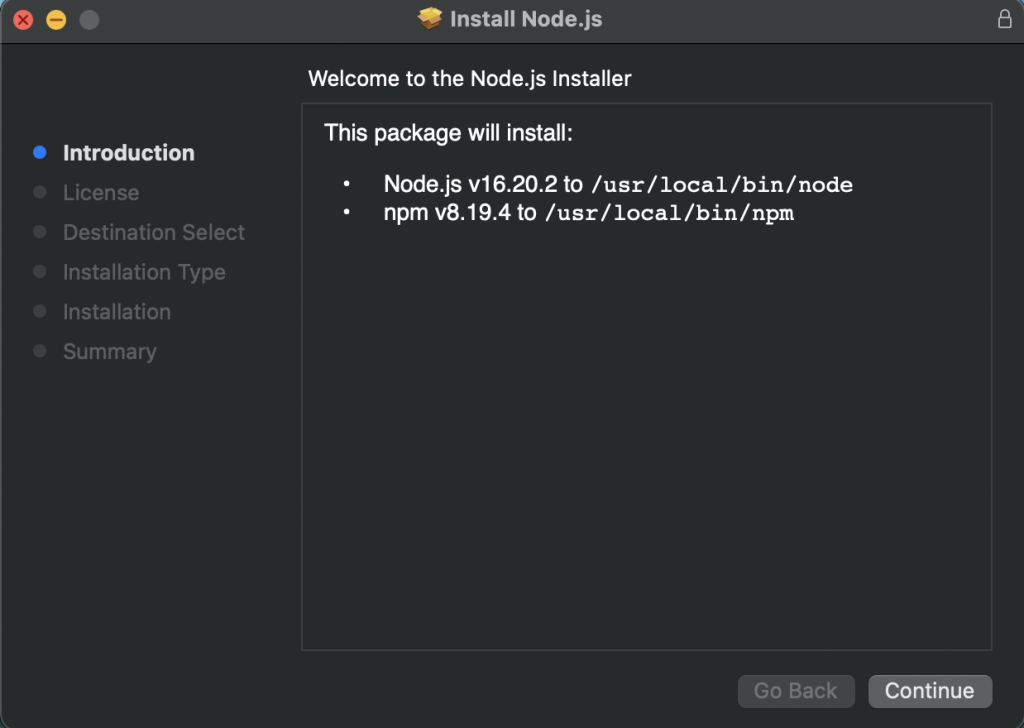
Click the Agree button to proceed.
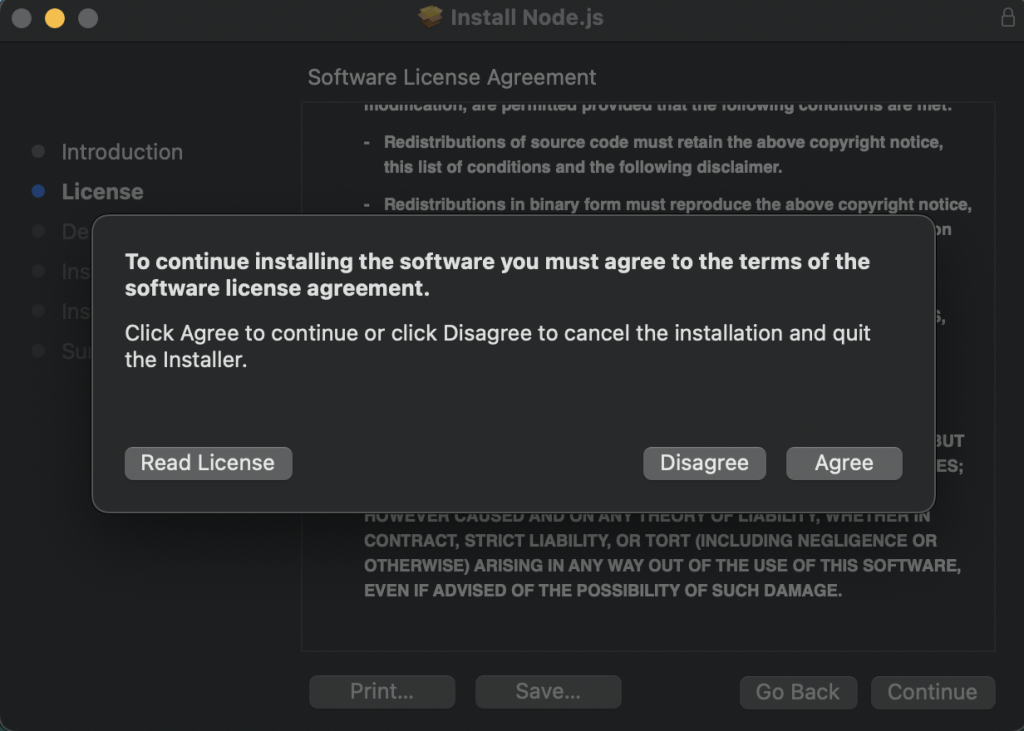
Then click the Install button to start the installation.

Enter your account password then click the Install Software button.
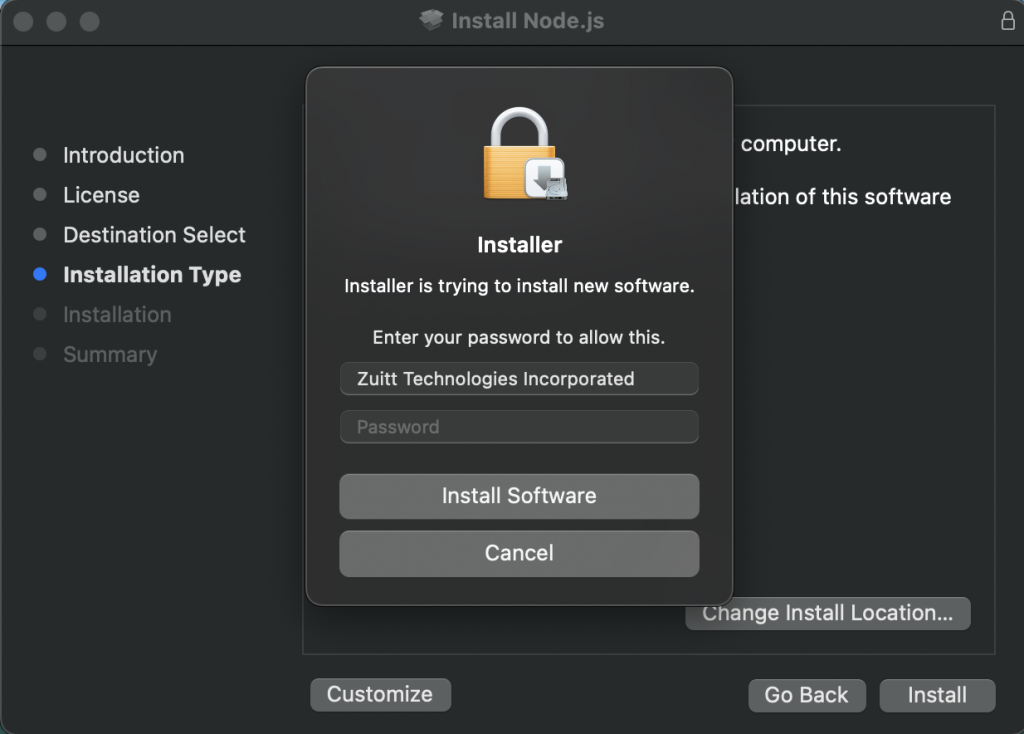
Wait for the installation to finish.

Click the Spotlight Search located at the top-right of your screen (the magnifying glass icon at the right side of the current time) then search and open a program named Terminal.
Verify the installation by executing node -v. The following output is to be expected (You should be able to see the version number of Node you downloaded):

Additionally, check for the version of NPM by executing npm -v.

If the version number is higher than in the screenshot, it means that it is more updated.
If you’ve stumbled upon this blog post and aren’t a bootcamper, you can begin your bootcamp journey with Zuitt by clicking this link:

